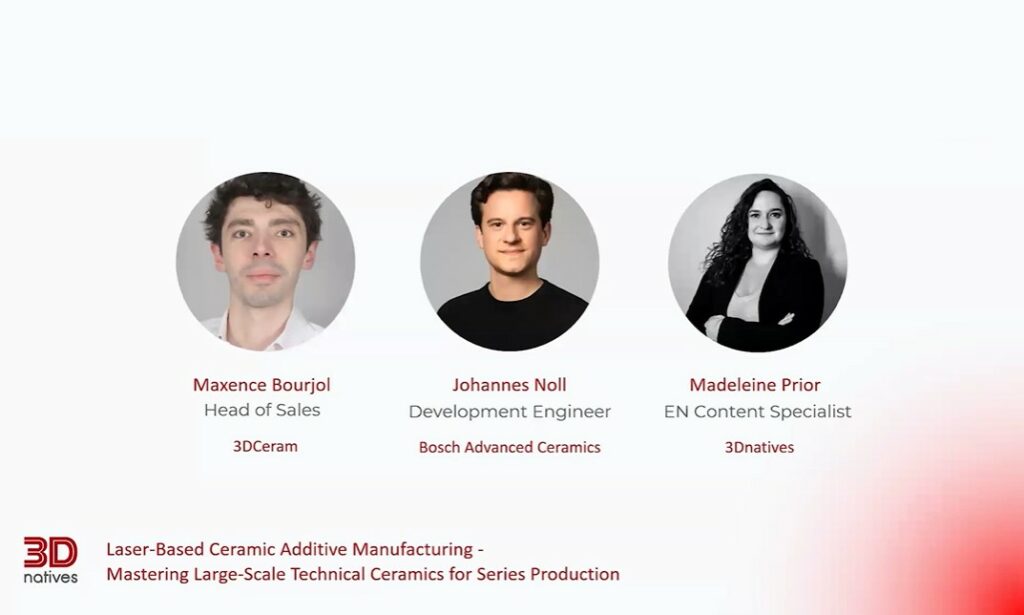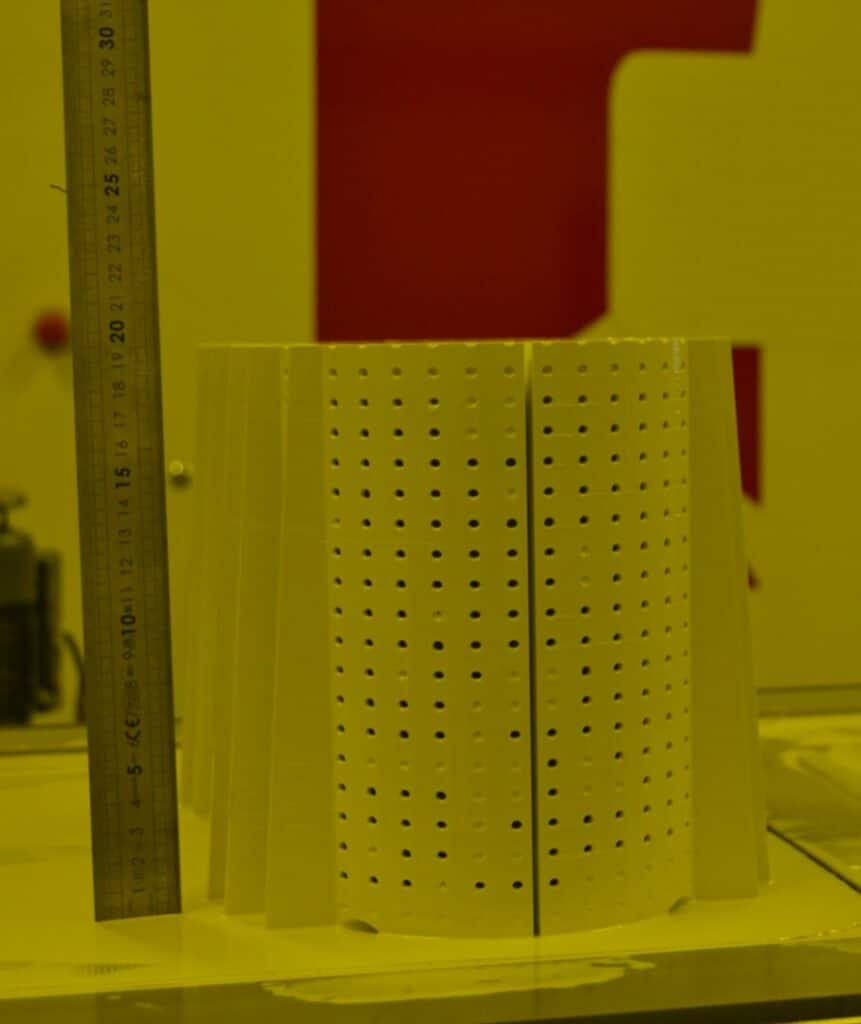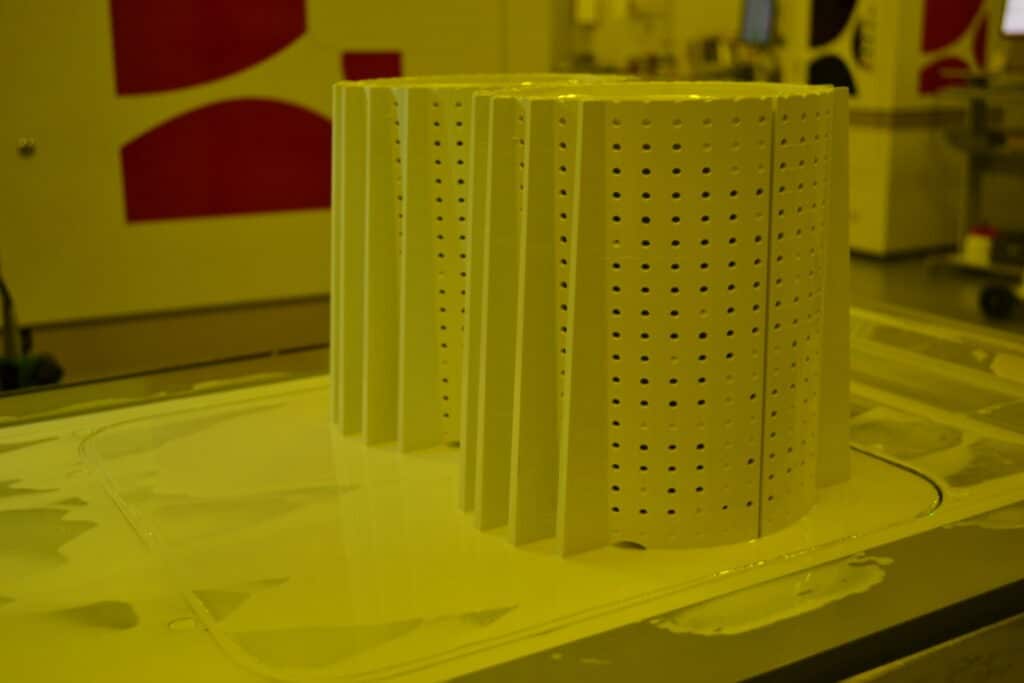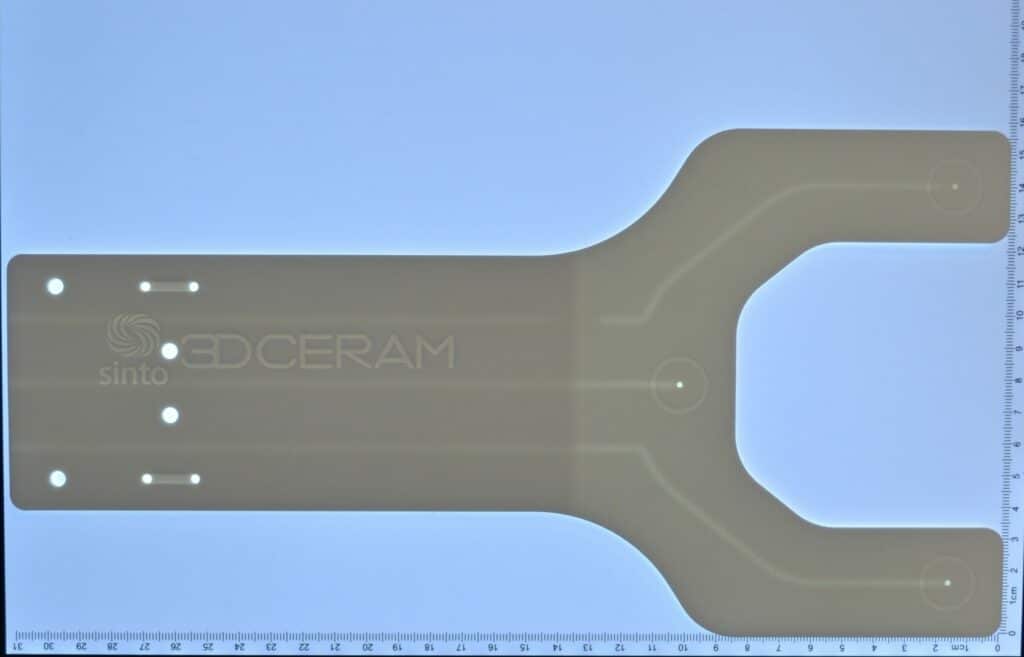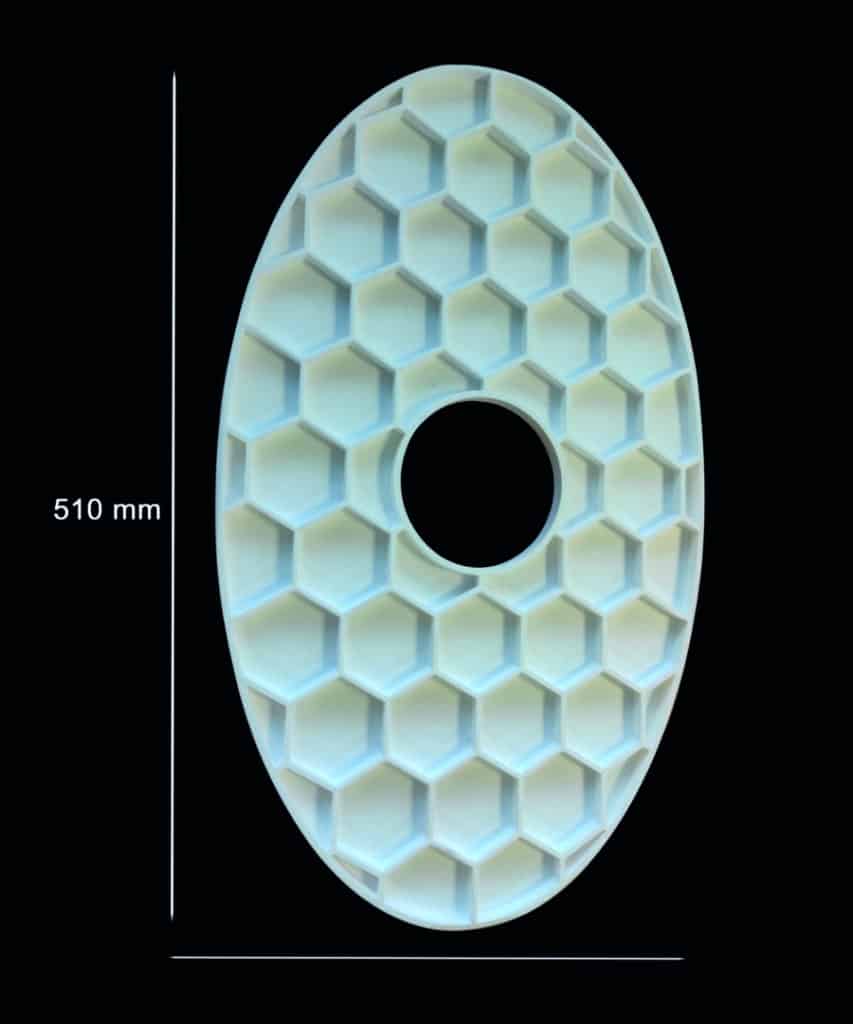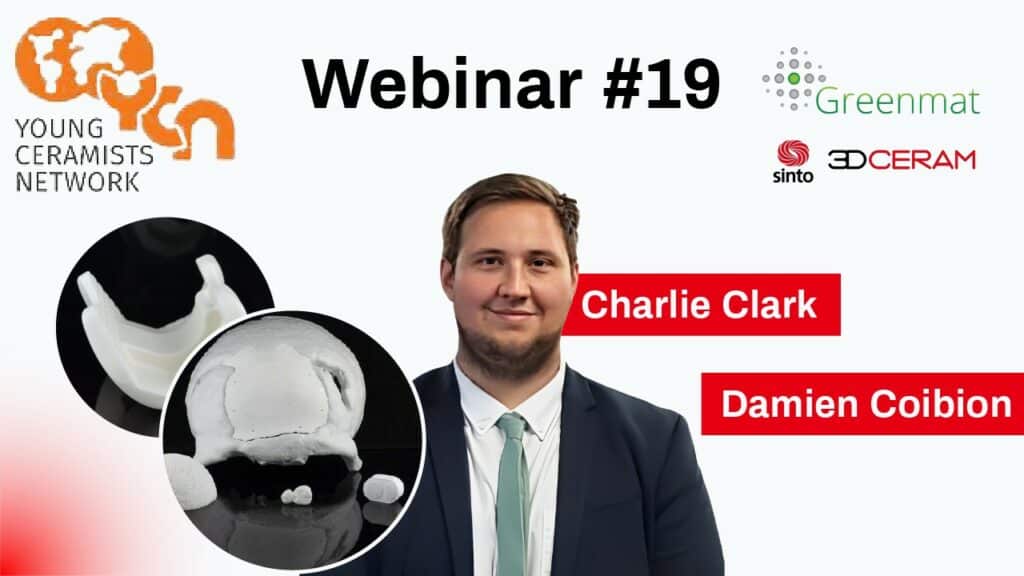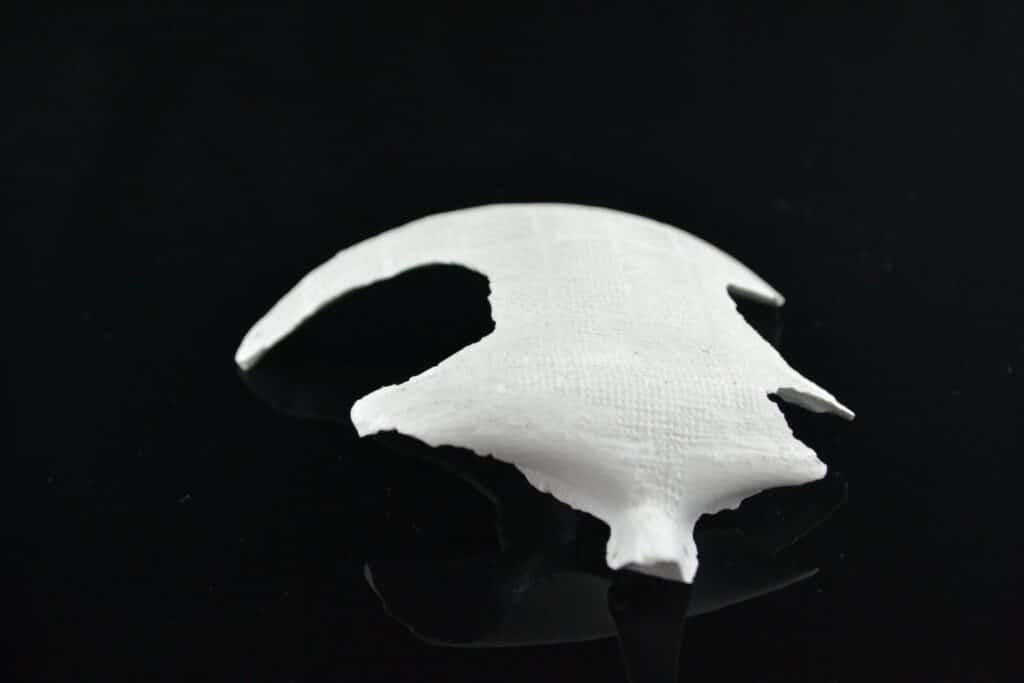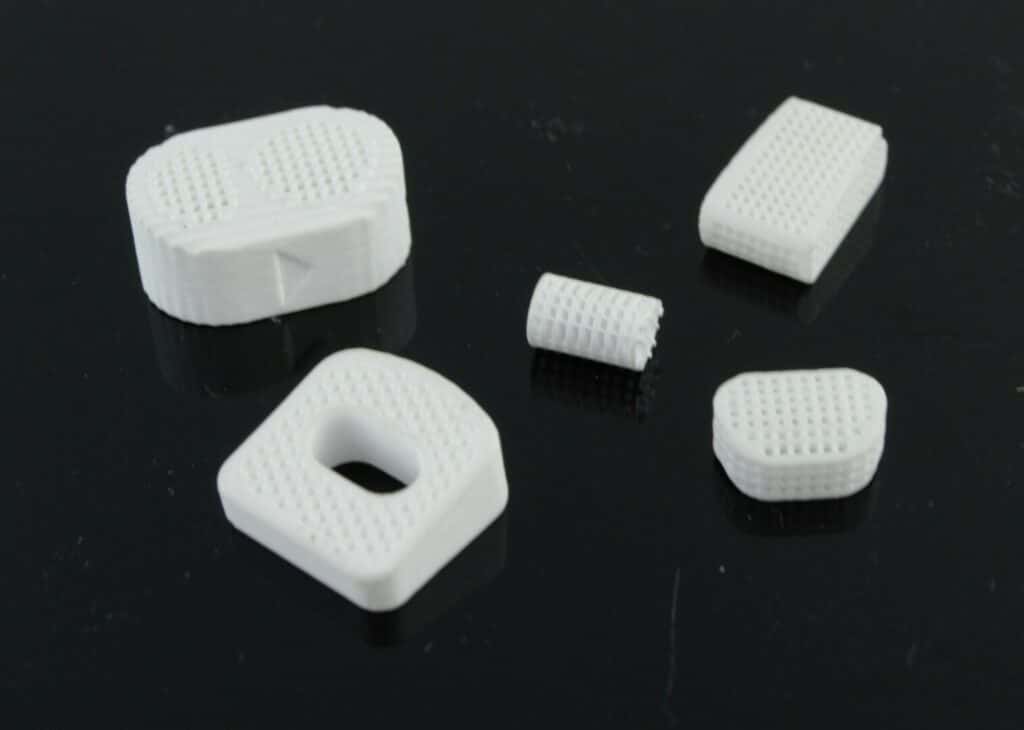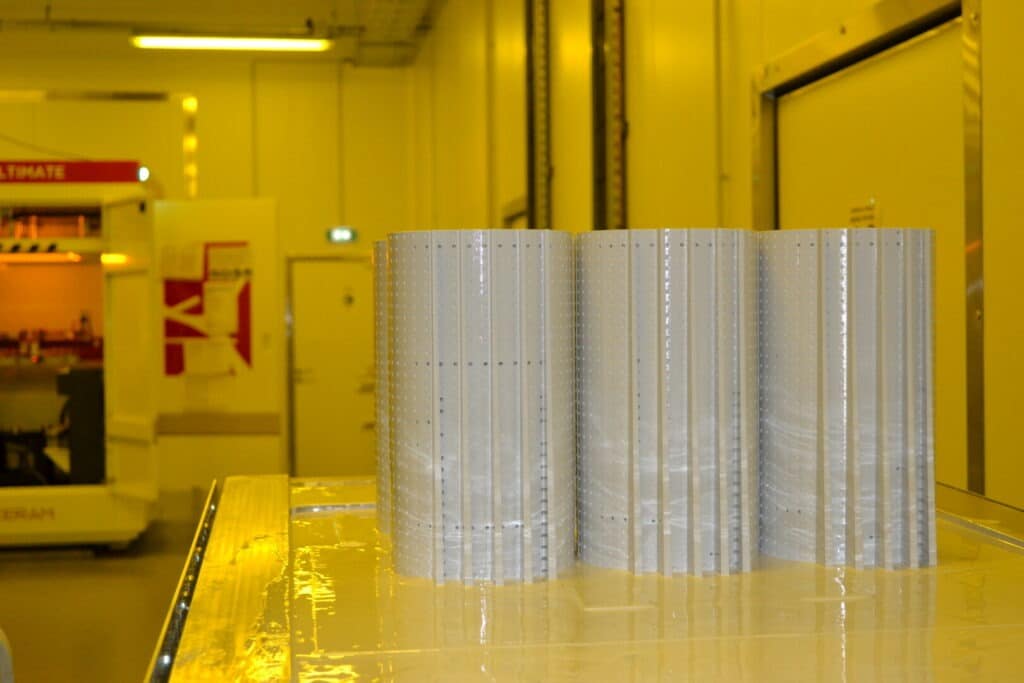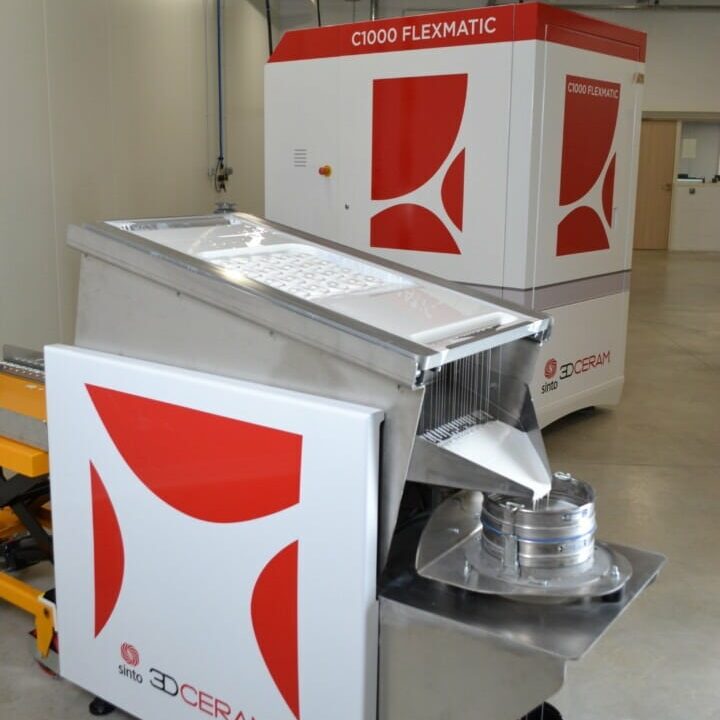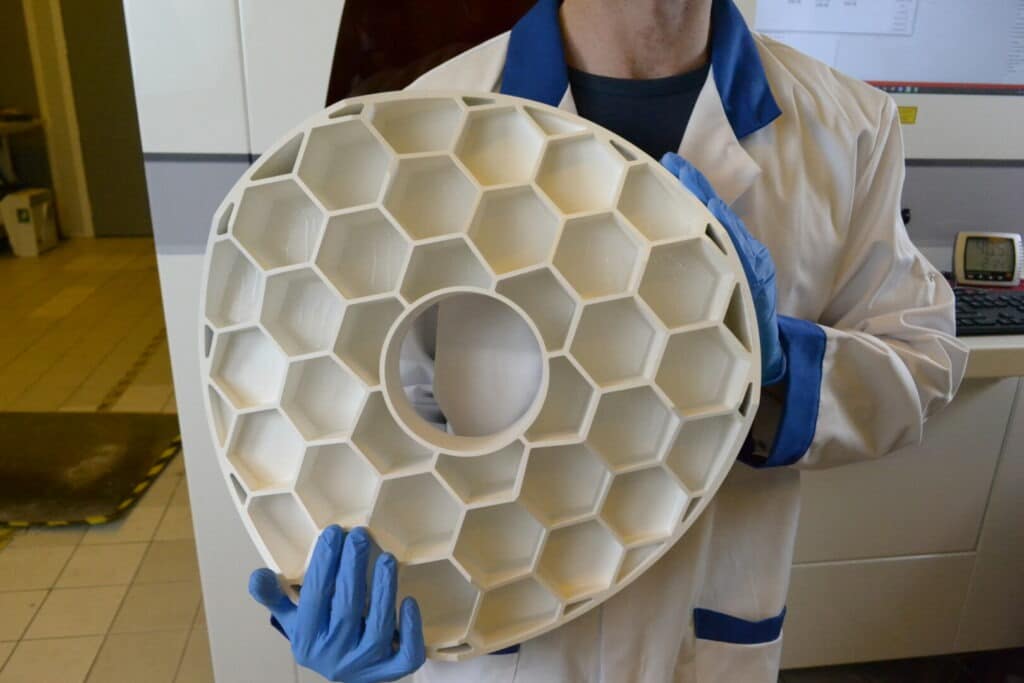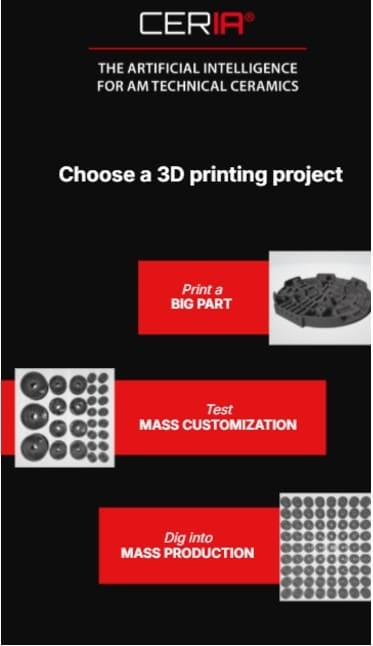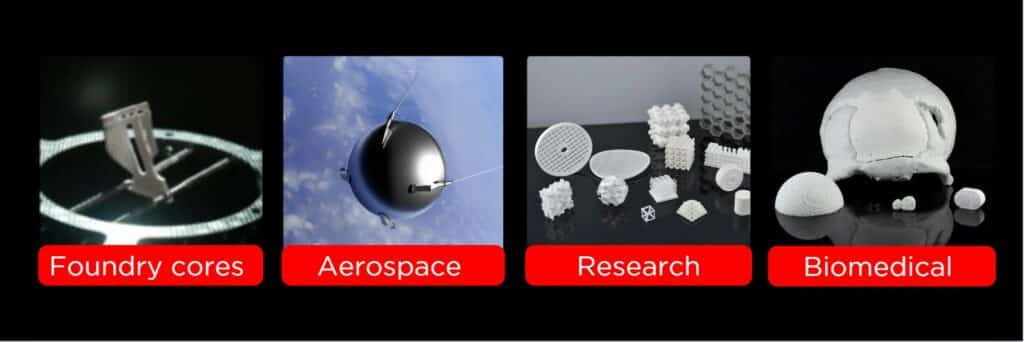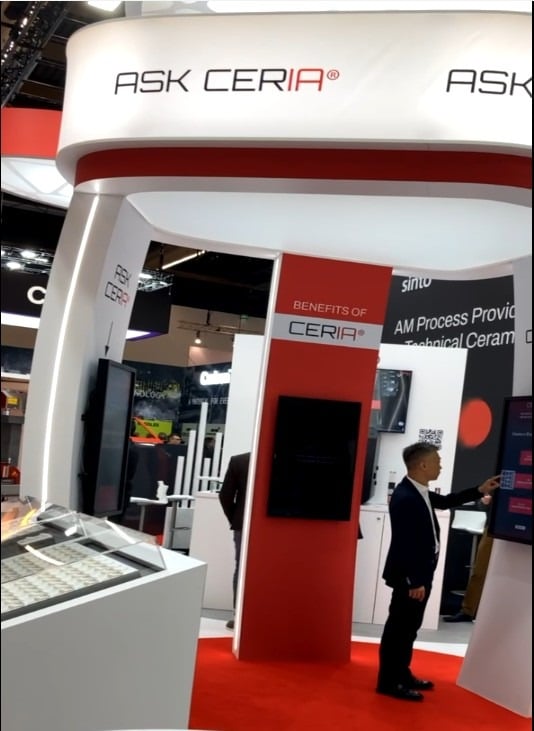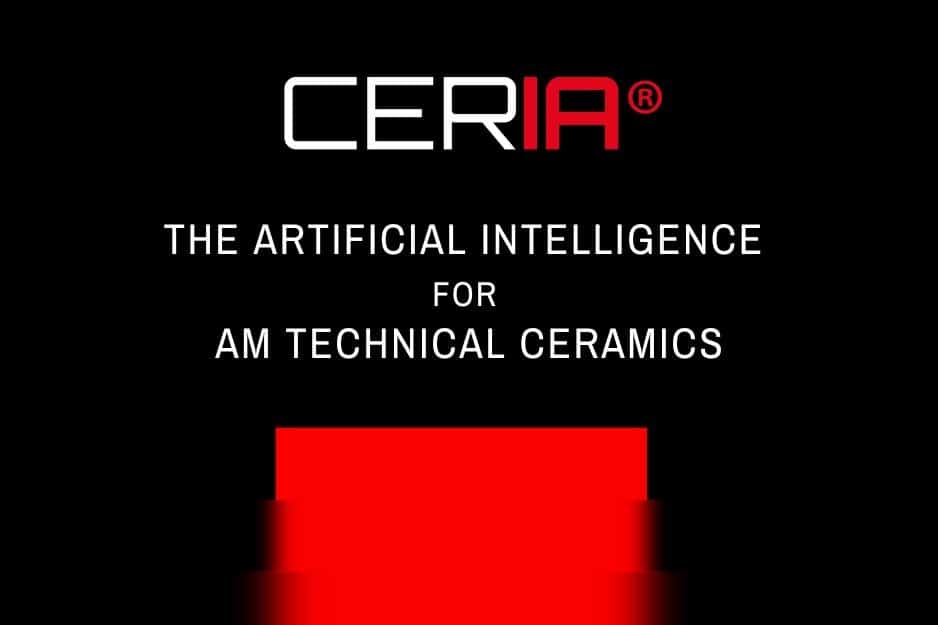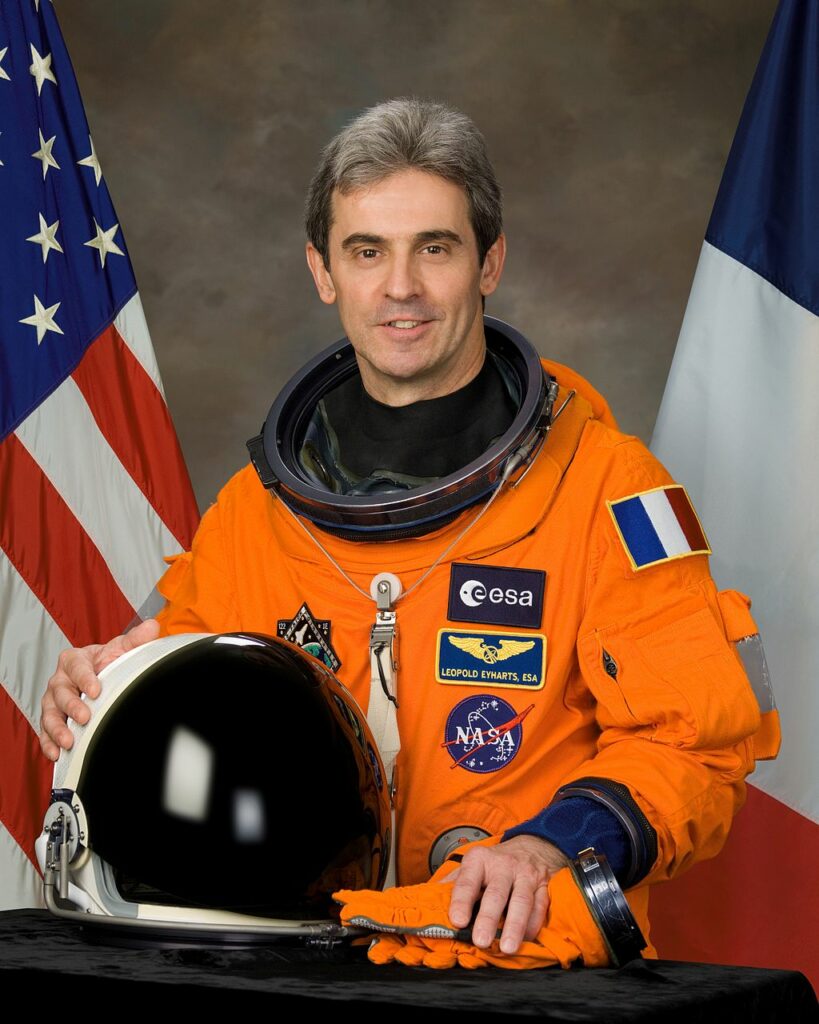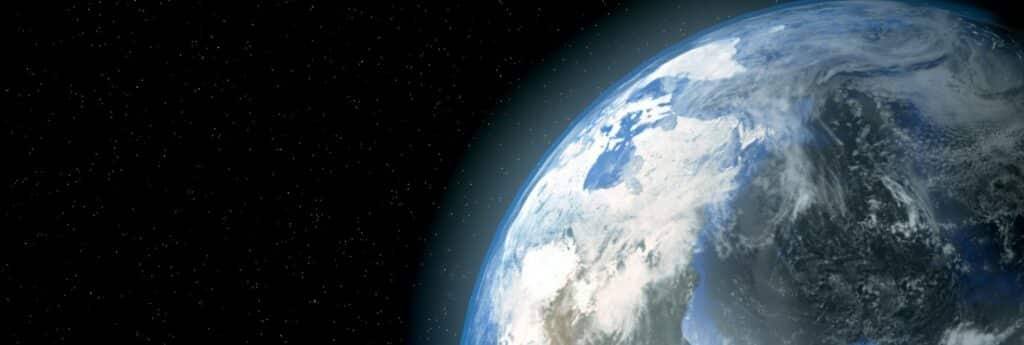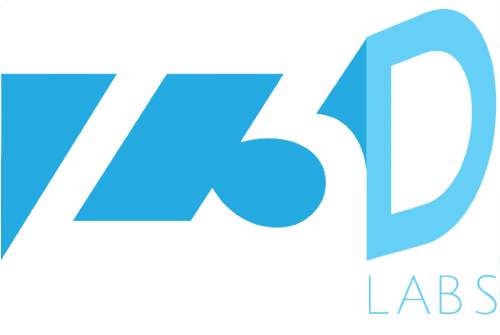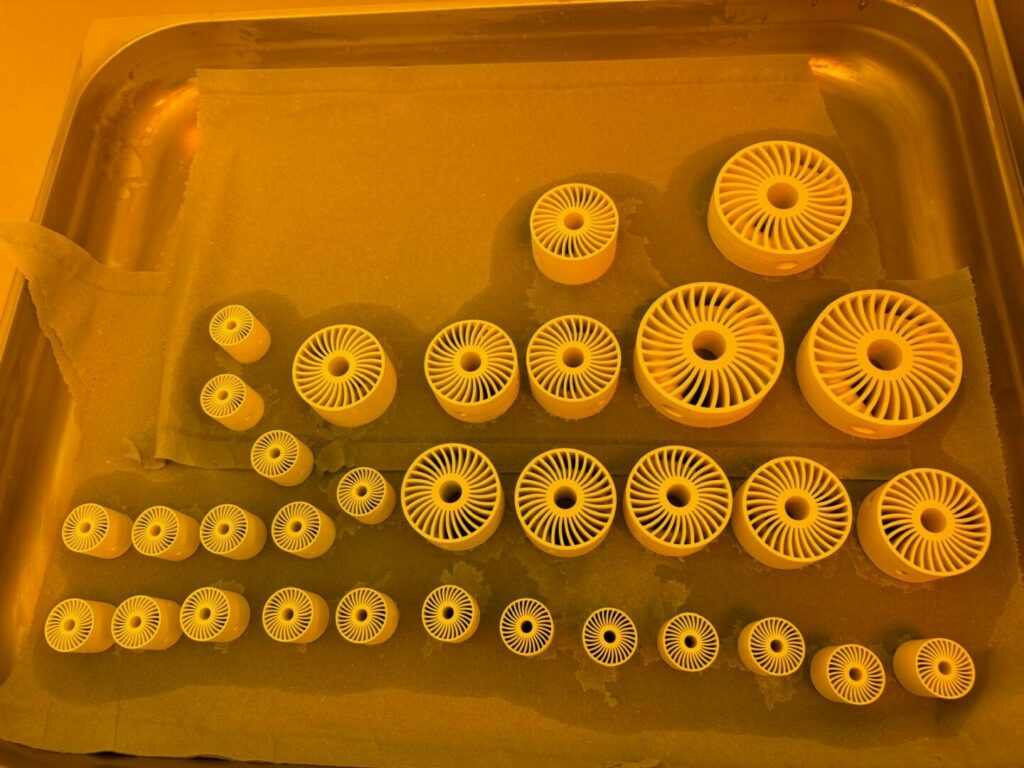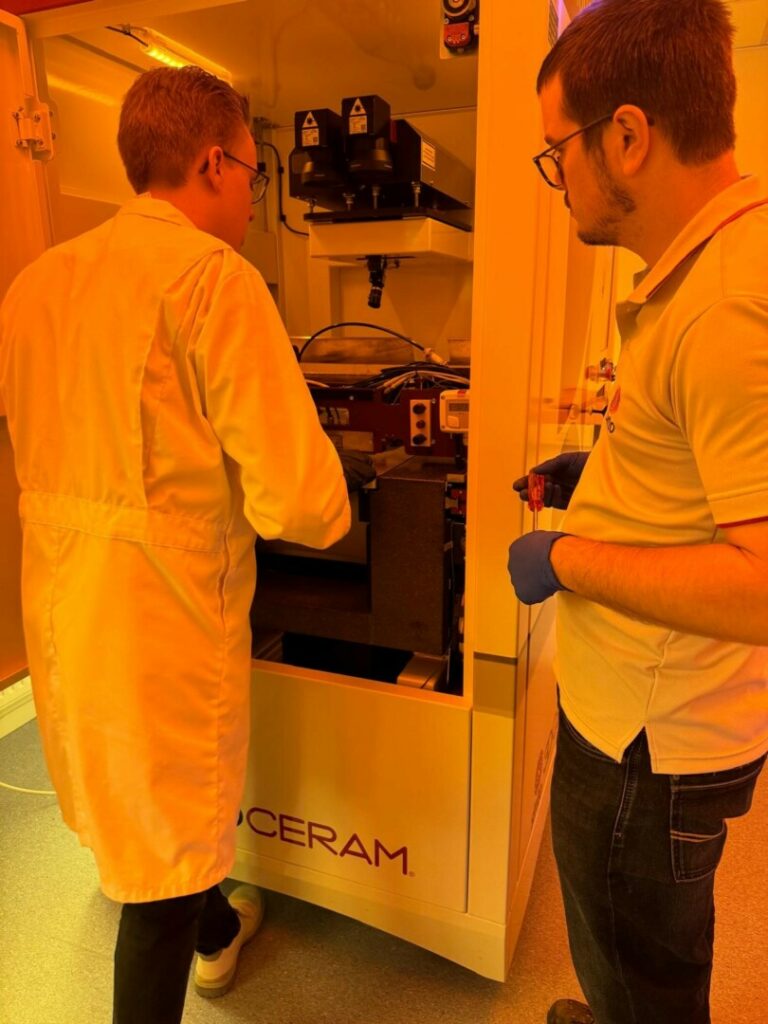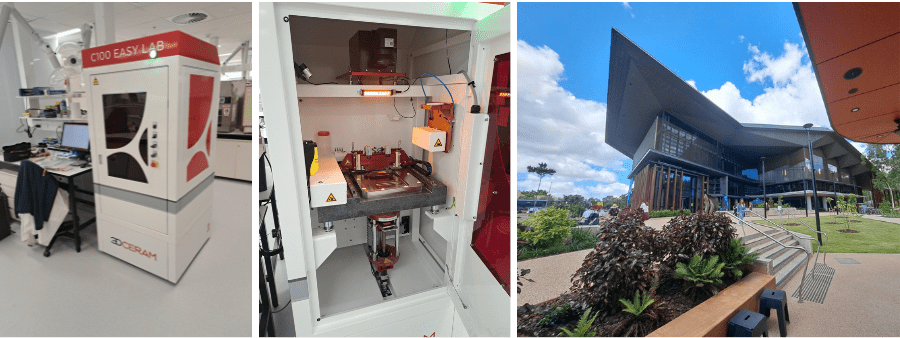Could you introduce your company, Z3Dlabs?
I founded Z3DLabs in 2014 in Rotterdam with the ambition of becoming a specialized leader in medical 3D printing, particularly in the manufacture of Class III implants. For many years now, we have been dedicated to pushing the boundaries of innovation in various sectors, including energy, semicon, industry, and medical manufacturing. Our team of highly skilled professionals is committed to delivering high-quality, efficient, and customizable 3D solutions that meet the unique needs of our clients. With a strong focus on development, Z3DLabs is constantly exploring new technologies and methodologies to stay at the forefront of the 3D printing industry, with a special focus on advanced ceramic materials. Our mission is to empower businesses with innovative tools and services that foster growth, inspire creativity and drive success in an ever-evolving Additive Manufacturing environment.
Why did you choose 3DCeram technology for technical ceramics AM?
We have been a reseller of 3DCeram Sinto since mid-2016 due to their dedication and proven expertise in technical ceramics. We chose 3DCeram Sinto Stereo lithography (SLA) 3Dprinting technology for technical ceramic additive manufacturing (AM) for several compelling reasons. Firstly, 3DCeram Sinto 3D printers can successfully utilize Hydroxyapatite for skull implants and overcame significant challenges in a market where technical ceramics are not yet fully developed. Their unique approach to SLA-3D printing and compliance with new medical device regulations in the Europe were important factors in our decision.
In 2018, we started at Maxima Medical Centre in Veldhoven to demonstrate our capabilities. This strategic move allowed us to meet our potential customers in the medical field as well as in the industrial, energy and aerospace sectors. The outstanding quality and performance of 3DCeram Sinto's technology was instrumental in journey in these different fields.
In the summer of 2023, a successful entrepreneur joined as an investor and co-owner of Z3Dlabs. Thanks to his contribution we could invest in the high-end machines and working environment.
Last year, December 2023 we moved to our new location in Oirschot. We installed three different 3D printing technologies and a 3D measurement machine. We can 3D print ceramics with customized designs, complex geometries and high precision to meet the specific requirements of professional applications. At the end of this year, we will open our doors to show our new production laboratories.
You have a printer on your premises with a large platform printing technical ceramics. Can you tell us what markets you hope to address with this machine?
At our facility in Oirschot, we utilize the C1000 Flexmatic 3D printer from 3DCeram Sinto, which features a large platform for printing technical ceramics. This advanced 3D printer can serve a wide range of markets, including semicon, electron microscopy, medical imaging, aerospace, automotive, and the medical sector. With its exceptional precision and versatility, the C1000 enables us to address the demanding requirements of these industries, providing high-quality, reliable, and innovative ceramic solutions.
You have been using Ceria Set for a few month, what is your feedback and your thoughts about AI as a support for AM?
To provide high quality ceramic products, it is essential to keep up productivity. As an addition to the workflow of ceramic AM it is a very useful tool to prevent down time during production. With CerIA®, we can establish an insight into the challenges for the next print job. Herewith we gain insight in the printing process where we can improve to deliver the highest quality. Moreover, CerIA® is able to generate process parameters such that critical printing phenomena are reduced. In a way, CerIA® is a virtual assistant to optimize our workflow with 3DCerams’ technology.
Your engineer, who works on the printer, had an advanced training in order to manage mass production with the printer, what could you/he say about that?
"Using the C1000 with the swappable printing VAT is mandatory to achieve high productivity. After changing the printing VAT to continue production, the used VAT can be cleaned immediately after starting the next print. With our current projects, we do not yet produce in high quantity but with high quality. We are keen to increase our projects with mass production, therefore we are eager to find clients with a need for high quality ceramics," according to AM Engineer Ir. Roy Maas of Z3DLabs!
What is the added value of Z3Dlabs as a service bureau? What technologies do you host and produce with?
Z3Dlabs offers significant value as a service bureau by providing high-precision 3D printing solutions tailored to the needs of high-end clients in the Brainport region, including leading companies in lightning, semiconducting electron microscope and energy sectors. Our expertise lies in delivering advanced, locally produced 3D printed components that meet the stringent quality standards required by these industry leaders.
We utilize state-of-the-art 3D Ceram technology, renowned for its capability to produce high-resolution, intricate ceramic parts. This technology enables us to offer superior performance and durability in our printed components, making them suitable for demanding applications in sectors such as electronics, healthcare, and high-tech manufacturing. By leveraging this cutting-edge technology, Z3Dlabs ensures that our clients receive not only innovative solutions but also timely and cost-effective services that enhance their operational efficiency.
At Z3Dlabs, we leverage a suite of advanced 3D printing technologies to deliver high-quality solutions. Our capabilities include Stereolithography (SLA) with the C1000 printer for high-resolution parts; Fused Filament Fabrication technology, Multi Additive Manufacturing (M.A.T.) 3D printer from 3DCeram Sinto Tiwari for intricate multi-material and multi-technology components, and Digital Light Processing (DLP) with nano-materials resin using the S230 and S240 from BMF for versatile and robust printing. Additionally, we ensure precise quality control with our Primo Verity 3D measurement machine from Zeiss, which provides accurate assessments of our 3D-printed parts.
What do you think about Additive manufacturing at the industrial scale? And future?
Additive manufacturing at the industrial scale presents both significant opportunities and challenges. Achieving high precision and reproducibility is crucial, as single-instance accuracy alone is insufficient for industrial applications. To advance additive manufacturing, it is essential to integrate a comprehensive suite of technologies and equipment that ensures consistent, high-quality production over time. This involves not only advancing the technology itself but also implementing robust quality control measures to achieve near-impossible tolerances and exceptional mechanical properties. Looking ahead, the future of industrial additive manufacturing will likely focus on enhancing these capabilities, fostering greater integration into traditional manufacturing processes, and driving innovations that will push the boundaries of what is possible in precision, performance, and efficiency.
What are your development objectives for 2024/2025?
In the fourth quarter of 2024, our primary focus is on preparing our laboratory to meet the evolving needs of our future clients. We are enhancing our capabilities to deliver parts with resolutions ranging from 2 micrometers to 10 micrometers using our BMF technology and producing technical ceramics up to 300 mm in the C1000 printer. Our precision measurement will be supported by the Prisma Verity system from Zeiss.
Our priority is as soon as possible to integrate the proven 3Dprinting materials alumina, zirconia, hydroxyapatite and Tricalcium Phosphate (TCP).
We will also focus on new materials such as cordierite which has low Coefficient of Thermal Expansion (CTE) value.
Looking ahead to 2025, we aim to advance our operational infrastructure by establishing a vacuum environment and a contamination-free, dust-controlled workspace. These upgrades will be integrated into a proven supply chain to ensure the highest standards of quality and reliability. Our goal is to position our capabilities at the forefront of the industry, delivering superior performance and precision to meet the most demanding client requirements.
Can you share your vision of technical ceramics AM? Do you see some new trends?
Technical ceramics in additive manufacturing (AM) present unique challenges and opportunities. Due to their complex material properties and multi-step processing requirements, such as binding, binder removal, and atomic solidification through sintering, these materials are often underrepresented in the design community. The multi-stage process, including the critical binding stage and subsequent solidification phases, plays a pivotal role in achieving the desired material properties. Communication and collaboration on that what really matter. Not once but continuously.
CEO and founder of Z3Dlabs, Mrs. Zerafet Tenwolde-Cansizoglu and COO and co-owner, Mr. Jean Henry Robert Madern.
